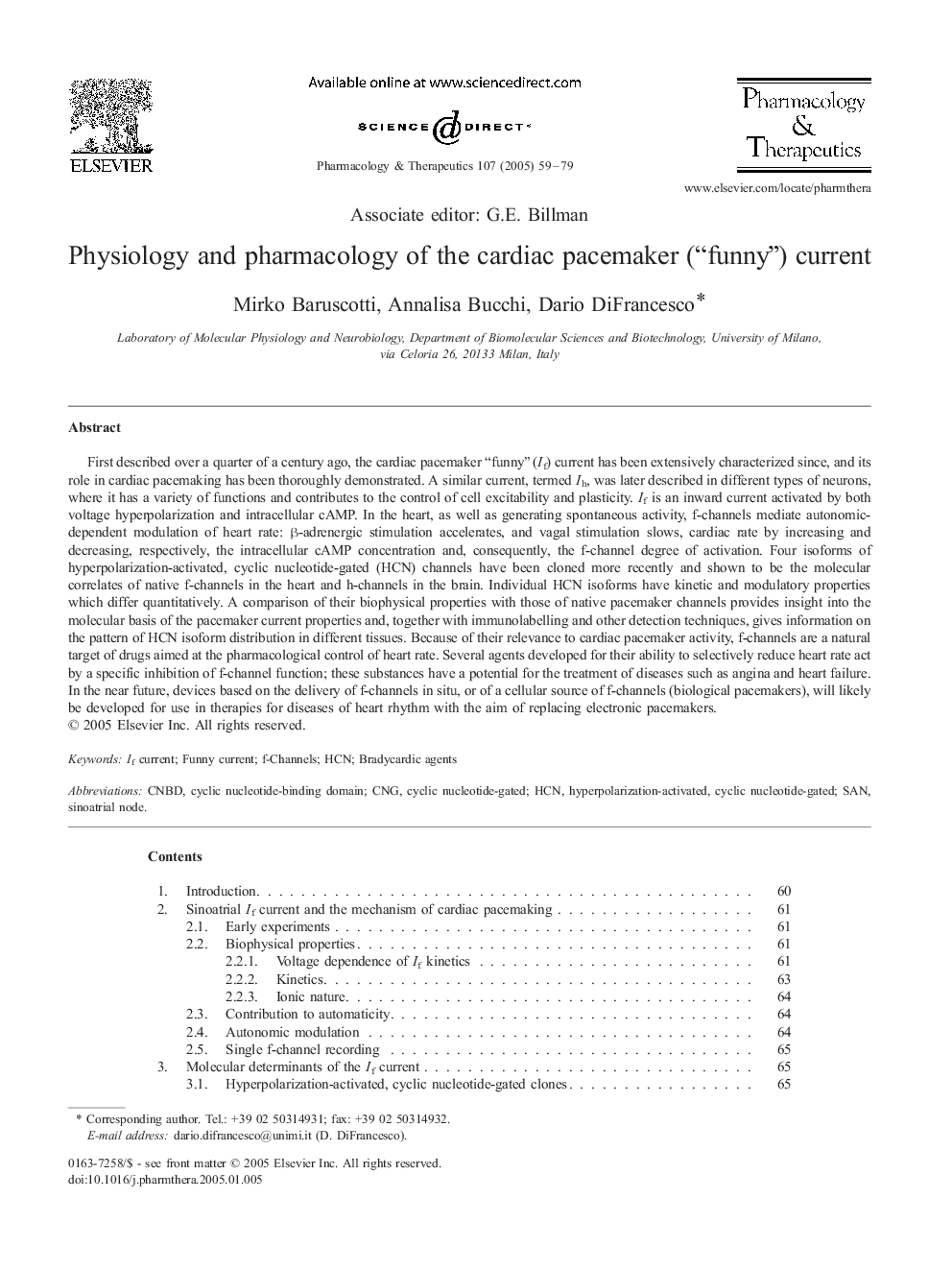| Article ID | Journal | Published Year | Pages | File Type |
|---|---|---|---|---|
| 9015884 | Pharmacology & Therapeutics | 2005 | 21 Pages |
Abstract
First described over a quarter of a century ago, the cardiac pacemaker “funny” (If) current has been extensively characterized since, and its role in cardiac pacemaking has been thoroughly demonstrated. A similar current, termed Ih, was later described in different types of neurons, where it has a variety of functions and contributes to the control of cell excitability and plasticity. If is an inward current activated by both voltage hyperpolarization and intracellular cAMP. In the heart, as well as generating spontaneous activity, f-channels mediate autonomic-dependent modulation of heart rate: β-adrenergic stimulation accelerates, and vagal stimulation slows, cardiac rate by increasing and decreasing, respectively, the intracellular cAMP concentration and, consequently, the f-channel degree of activation. Four isoforms of hyperpolarization-activated, cyclic nucleotide-gated (HCN) channels have been cloned more recently and shown to be the molecular correlates of native f-channels in the heart and h-channels in the brain. Individual HCN isoforms have kinetic and modulatory properties which differ quantitatively. A comparison of their biophysical properties with those of native pacemaker channels provides insight into the molecular basis of the pacemaker current properties and, together with immunolabelling and other detection techniques, gives information on the pattern of HCN isoform distribution in different tissues. Because of their relevance to cardiac pacemaker activity, f-channels are a natural target of drugs aimed at the pharmacological control of heart rate. Several agents developed for their ability to selectively reduce heart rate act by a specific inhibition of f-channel function; these substances have a potential for the treatment of diseases such as angina and heart failure. In the near future, devices based on the delivery of f-channels in situ, or of a cellular source of f-channels (biological pacemakers), will likely be developed for use in therapies for diseases of heart rhythm with the aim of replacing electronic pacemakers.
Keywords
Related Topics
Health Sciences
Pharmacology, Toxicology and Pharmaceutical Science
Pharmacology
Authors
Mirko Baruscotti, Annalisa Bucchi, Dario DiFrancesco,
